Jianchen Zhu
refer to the report for detailed contributions
Hunyuan3D 2.0: Scaling Diffusion Models for High Resolution Textured 3D Assets Generation
Jan 21, 2025



Abstract:We present Hunyuan3D 2.0, an advanced large-scale 3D synthesis system for generating high-resolution textured 3D assets. This system includes two foundation components: a large-scale shape generation model -- Hunyuan3D-DiT, and a large-scale texture synthesis model -- Hunyuan3D-Paint. The shape generative model, built on a scalable flow-based diffusion transformer, aims to create geometry that properly aligns with a given condition image, laying a solid foundation for downstream applications. The texture synthesis model, benefiting from strong geometric and diffusion priors, produces high-resolution and vibrant texture maps for either generated or hand-crafted meshes. Furthermore, we build Hunyuan3D-Studio -- a versatile, user-friendly production platform that simplifies the re-creation process of 3D assets. It allows both professional and amateur users to manipulate or even animate their meshes efficiently. We systematically evaluate our models, showing that Hunyuan3D 2.0 outperforms previous state-of-the-art models, including the open-source models and closed-source models in geometry details, condition alignment, texture quality, and etc. Hunyuan3D 2.0 is publicly released in order to fill the gaps in the open-source 3D community for large-scale foundation generative models. The code and pre-trained weights of our models are available at: https://github.com/Tencent/Hunyuan3D-2
Hunyuan-Large: An Open-Source MoE Model with 52 Billion Activated Parameters by Tencent
Nov 05, 2024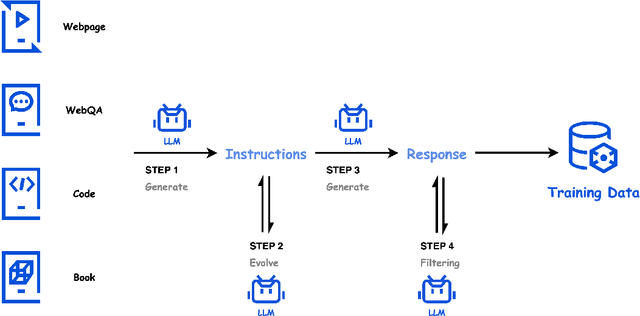
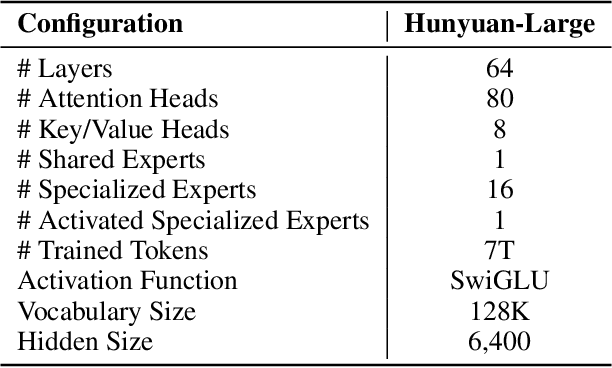
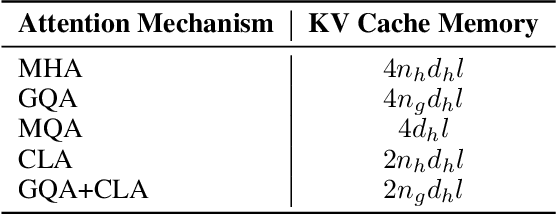
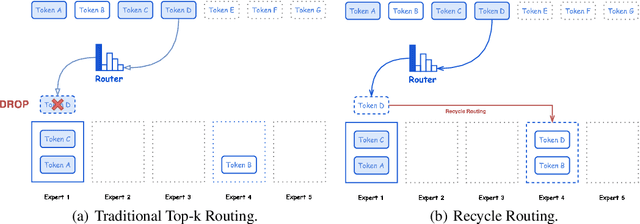
Abstract:In this paper, we introduce Hunyuan-Large, which is currently the largest open-source Transformer-based mixture of experts model, with a total of 389 billion parameters and 52 billion activation parameters, capable of handling up to 256K tokens. We conduct a thorough evaluation of Hunyuan-Large's superior performance across various benchmarks including language understanding and generation, logical reasoning, mathematical problem-solving, coding, long-context, and aggregated tasks, where it outperforms LLama3.1-70B and exhibits comparable performance when compared to the significantly larger LLama3.1-405B model. Key practice of Hunyuan-Large include large-scale synthetic data that is orders larger than in previous literature, a mixed expert routing strategy, a key-value cache compression technique, and an expert-specific learning rate strategy. Additionally, we also investigate the scaling laws and learning rate schedule of mixture of experts models, providing valuable insights and guidances for future model development and optimization. The code and checkpoints of Hunyuan-Large are released to facilitate future innovations and applications. Codes: https://github.com/Tencent/Hunyuan-Large Models: https://huggingface.co/tencent/Tencent-Hunyuan-Large
Parallel Speculative Decoding with Adaptive Draft Length
Aug 13, 2024Abstract:Speculative decoding (SD), where an extra draft model is employed to provide multiple \textit{draft} tokens first and then the original target model verifies these tokens in parallel, has shown great power for LLM inference acceleration. However, existing SD methods suffer from the mutual waiting problem, i.e., the target model gets stuck when the draft model is \textit{guessing} tokens, and vice versa. This problem is directly incurred by the asynchronous execution of the draft model and the target model, and is exacerbated due to the fixed draft length in speculative decoding. To address these challenges, we propose a conceptually simple, flexible, and general framework to boost speculative decoding, namely \textbf{P}arallel sp\textbf{E}culative decoding with \textbf{A}daptive d\textbf{R}aft \textbf{L}ength (PEARL). Specifically, PEARL proposes \textit{pre-verify} to verify the first draft token in advance during the drafting phase, and \textit{post-verify} to generate more draft tokens during the verification phase. PEARL parallels the drafting phase and the verification phase via applying the two strategies, and achieves adaptive draft length for different scenarios, which effectively alleviates the mutual waiting problem. Moreover, we theoretically demonstrate that the mean accepted tokens of PEARL is more than existing \textit{draft-then-verify} works. Experiments on various text generation benchmarks demonstrate the effectiveness of our \name, leading to a superior speedup performance up to \textbf{3.79$\times$} and \textbf{1.52$\times$}, compared to auto-regressive decoding and vanilla speculative decoding, respectively.
Hunyuan-DiT: A Powerful Multi-Resolution Diffusion Transformer with Fine-Grained Chinese Understanding
May 14, 2024



Abstract:We present Hunyuan-DiT, a text-to-image diffusion transformer with fine-grained understanding of both English and Chinese. To construct Hunyuan-DiT, we carefully design the transformer structure, text encoder, and positional encoding. We also build from scratch a whole data pipeline to update and evaluate data for iterative model optimization. For fine-grained language understanding, we train a Multimodal Large Language Model to refine the captions of the images. Finally, Hunyuan-DiT can perform multi-turn multimodal dialogue with users, generating and refining images according to the context. Through our holistic human evaluation protocol with more than 50 professional human evaluators, Hunyuan-DiT sets a new state-of-the-art in Chinese-to-image generation compared with other open-source models. Code and pretrained models are publicly available at github.com/Tencent/HunyuanDiT
Active RIS-Aided Massive MIMO With Imperfect CSI and Phase Noise
May 06, 2024



Abstract:Active reconfigurable intelligent surface (RIS) has attracted significant attention as a recently proposed RIS architecture. Owing to its capability to amplify the incident signals, active RIS can mitigate the multiplicative fading effect inherent in the passive RIS-aided system. In this paper, we consider an active RIS-aided uplink multi-user massive multiple-input multiple-output (MIMO) system in the presence of phase noise at the active RIS. Specifically, we employ a two-timescale scheme, where the beamforming at the base station (BS) is adjusted based on the instantaneous aggregated channel state information (CSI) and the statistical CSI serves as the basis for designing the phase shifts at the active RIS, so that the feedback overhead and computational complexity can be significantly reduced. The aggregated channel composed of the cascaded and direct channels is estimated by utilizing the linear minimum mean square error (LMMSE) technique. Based on the estimated channel, we derive the analytical closed-form expression of a lower bound of the achievable rate. The power scaling laws in the active RIS-aided system are investigated based on the theoretical expressions. When the transmit power of each user is scaled down by the number of BS antennas M or reflecting elements N, we find that the thermal noise will cause the lower bound of the achievable rate to approach zero, as the number of M or N increases to infinity. Moreover, an optimization approach based on genetic algorithms (GA) is introduced to tackle the phase shift optimization problem. Numerical results reveal that the active RIS can greatly enhance the performance of the considered system under various settings.
EasyQuant: An Efficient Data-free Quantization Algorithm for LLMs
Mar 05, 2024



Abstract:Large language models (LLMs) have proven to be very superior to conventional methods in various tasks. However, their expensive computations and high memory requirements are prohibitive for deployment. Model quantization is an effective method for reducing this overhead. The problem is that in most previous works, the quantized model was calibrated using few samples from the training data, which might affect the generalization of the quantized LLMs to unknown cases and tasks. Hence in this work, we explore an important question: Can we design a data-independent quantization method for LLMs to guarantee its generalization performance? In this work, we propose EasyQuant, a training-free and data-independent weight-only quantization algorithm for LLMs. Our observation indicates that two factors: outliers in the weight and quantization ranges, are essential for reducing the quantization error. Therefore, in EasyQuant, we leave the outliers (less than 1%) unchanged and optimize the quantization range to reduce the reconstruction error. With these methods, we surprisingly find that EasyQuant achieves comparable performance to the original model. Since EasyQuant does not depend on any training data, the generalization performance of quantized LLMs is safely guaranteed. Moreover, EasyQuant can be implemented in parallel so that the quantized model could be attained in a few minutes even for LLMs over 100B. To our best knowledge, we are the first work that achieves almost lossless quantization performance for LLMs under a data-independent setting and our algorithm runs over 10 times faster than the data-dependent methods.
E-Sparse: Boosting the Large Language Model Inference through Entropy-based N:M Sparsity
Oct 24, 2023



Abstract:Traditional pruning methods are known to be challenging to work in Large Language Models (LLMs) for Generative AI because of their unaffordable training process and large computational demands. For the first time, we introduce the information entropy of hidden state features into a pruning metric design, namely E-Sparse, to improve the accuracy of N:M sparsity on LLM. E-Sparse employs the information richness to leverage the channel importance, and further incorporates several novel techniques to put it into effect: (1) it introduces information entropy to enhance the significance of parameter weights and input feature norms as a novel pruning metric, and performs N:M sparsity without modifying the remaining weights. (2) it designs global naive shuffle and local block shuffle to quickly optimize the information distribution and adequately cope with the impact of N:M sparsity on LLMs' accuracy. E-Sparse is implemented as a Sparse-GEMM on FasterTransformer and runs on NVIDIA Ampere GPUs. Extensive experiments on the LLaMA family and OPT models show that E-Sparse can significantly speed up the model inference over the dense model (up to 1.53X) and obtain significant memory saving (up to 43.52%), with acceptable accuracy loss.
MKQ-BERT: Quantized BERT with 4-bits Weights and Activations
Mar 25, 2022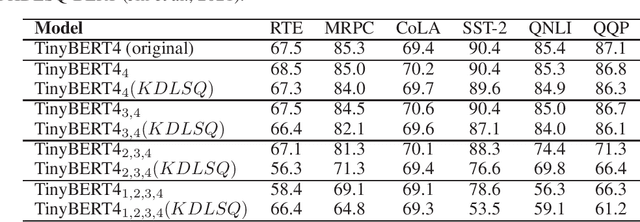
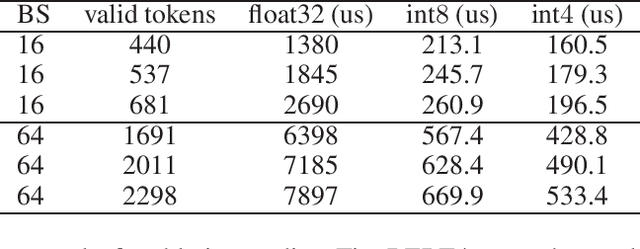

Abstract:Recently, pre-trained Transformer based language models, such as BERT, have shown great superiority over the traditional methods in many Natural Language Processing (NLP) tasks. However, the computational cost for deploying these models is prohibitive on resource-restricted devices. One method to alleviate this computation overhead is to quantize the original model into fewer bits representation, and previous work has proved that we can at most quantize both weights and activations of BERT into 8-bits, without degrading its performance. In this work, we propose MKQ-BERT, which further improves the compression level and uses 4-bits for quantization. In MKQ-BERT, we propose a novel way for computing the gradient of the quantization scale, combined with an advanced distillation strategy. On the one hand, we prove that MKQ-BERT outperforms the existing BERT quantization methods for achieving a higher accuracy under the same compression level. On the other hand, we are the first work that successfully deploys the 4-bits BERT and achieves an end-to-end speedup for inference. Our results suggest that we could achieve 5.3x of bits reduction without degrading the model accuracy, and the inference speed of one int4 layer is 15x faster than a float32 layer in Transformer based model.
TexSmart: A Text Understanding System for Fine-Grained NER and Enhanced Semantic Analysis
Dec 31, 2020



Abstract:This technique report introduces TexSmart, a text understanding system that supports fine-grained named entity recognition (NER) and enhanced semantic analysis functionalities. Compared to most previous publicly available text understanding systems and tools, TexSmart holds some unique features. First, the NER function of TexSmart supports over 1,000 entity types, while most other public tools typically support several to (at most) dozens of entity types. Second, TexSmart introduces new semantic analysis functions like semantic expansion and deep semantic representation, that are absent in most previous systems. Third, a spectrum of algorithms (from very fast algorithms to those that are relatively slow but more accurate) are implemented for one function in TexSmart, to fulfill the requirements of different academic and industrial applications. The adoption of unsupervised or weakly-supervised algorithms is especially emphasized, with the goal of easily updating our models to include fresh data with less human annotation efforts. The main contents of this report include major functions of TexSmart, algorithms for achieving these functions, how to use the TexSmart toolkit and Web APIs, and evaluation results of some key algorithms.
Spatial Sparse subspace clustering for Compressive Spectral imaging
Nov 05, 2019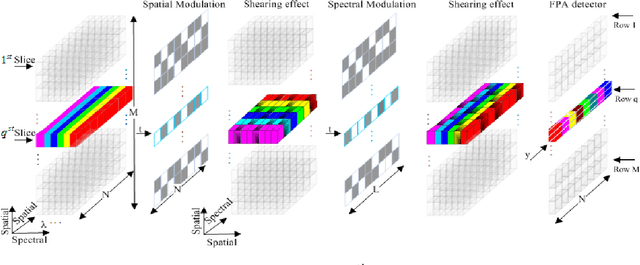



Abstract:This paper aims at developing a clustering approach with spectral images directly from CASSI compressive measurements. The proposed clustering method first assumes that compressed measurements lie in the union of multiple low-dimensional subspaces. Therefore, sparse subspace clustering (SSC) is an unsupervised method that assigns compressed measurements to their respective subspaces. In addition, a 3D spatial regularizer is added into the SSC problem, thus taking full advantages of the spatial information contained in spectral images. The performance of the proposed spectral image clustering approach is improved by taking optimal CASSI measurements obtained when optimal coded apertures are used in CASSI system. Simulation with one real dataset illustrates the accuracy of the proposed spectral image clustering approach.
 Add to Chrome
Add to Chrome Add to Firefox
Add to Firefox Add to Edge
Add to Edge